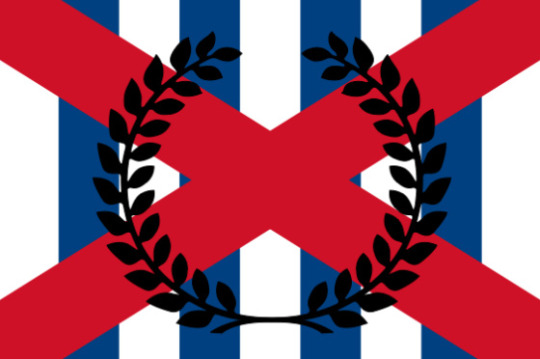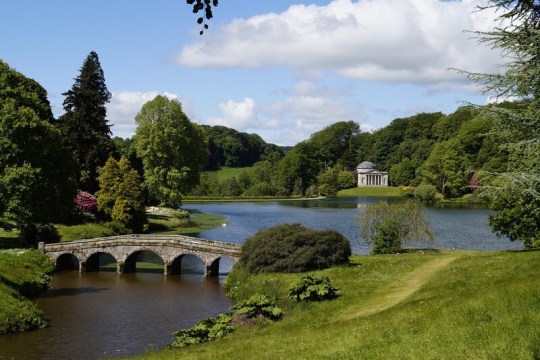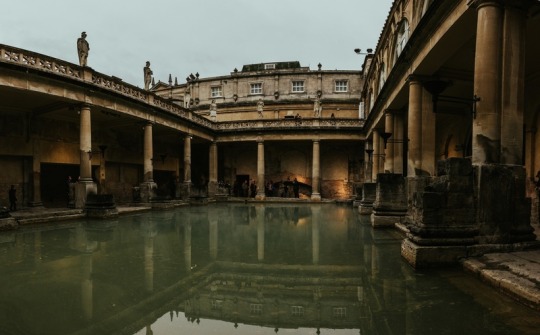#windsor framework
Explore tagged Tumblr posts
Text
The reports from The Peoples' Voice never cease to amaze but this episode is nothing short of jaw-dropping.
@TPVSean reads from the King Charles III's (now-retracted) written announcement posted to the official website of Buckingham Palace. This was his annual December 25th Christmas Message to the Nation and to the Commonwealth, of which a watered-down version was broadcast in his videotaped address later that day, about the "necessity" for the "dismantling" the "concept of absolute sovereignty...for the good of humankind".
Calling for the end of sovereignty is a pretty heavy thing to lay down on your people, over whom you'd previously claimed to be the one-and-only Sovereign!
Did Charles just abdicate the British Throne?
The King of the United Kingdom and of the 14 other Commonwealth realms announced to his Subjects the impending dissolution of their own countries – and theoretically of all other countries – by saying that, "It is only by embracing a global framework – a true partnership of nations, as envisioned by the World Economic Forum's Great Reset – that we can address the profound challenges before us."
By saying this, he may have broken his Coronation Oath and he may have de facto abdicated the Throne. This is likely why the King's 2024 Christmas Message webpage got taken down by his own courtiers.
Charles Windsor's message hardly comes as a surprise, given the way the UK government has been treating its citizens, lately.
Below is my transcript of the screenshot of the now-deleted Royal announcement, posted to the Royal.uk website, at a quarter to 3AM on Christmas Morning (the emphases are mine):
29 notes
·
View notes
Note
“It’s an already grossly inflamed situation and the UK/Charles are not helping at all.”
Purely for context it is relevant, as regards invitations King Charles is issuing - or rather his government issues in his name - that has previous government signed PESCO on November 2022 and that Keir Starmer is ratcheting up BRINO.
Both political parties betrayed Brexit and basically throttled it with the Windsor framework, which betrayed Northern Ireland, and then signed PESCO.
“In terms of thematic cooperation between the EU and the UK, it should be noted that the Sunak government and Labour are closely aligned on many other key foreign and security policy issues, where policy change is therefore expected to be limited. This shows that Starmer has brought his party closer to the foreign and security policy mainstream in London after the years under Corbyn. But Rishi Sunak has also made some course corrections compared to his short-lived predecessor, Liz Truss.” [Prospects for UK-EU Cooperation in Foreign and Security Policy after the UK Elections
SWP Comment 2024/C 27, 05.07.2024, 7 Pages
From swp-berlin . Org
I believe this Truss had a much stronger pro USA pro CANZUK position and I believe this is why she was specifically brought down. 
I also think that this is what Prince William may have been referring to when he was quoted as saying that Prince George may not join the army. There may not be a UK army or Navy per se by the time Prince George grows up. 
Thank you for this added context, but under no scenario are Charles’s motivations as strategic as people think they are. That man has always been driven by his ego and only his ego.
9 notes
·
View notes
Text
Wally, Wally, Wally.
Walter Schellenberg was employed by Heydrich in SS intelligence effort to unmask all internal resistance and plots against the Nazi regime.
Yes, yes. Hello, Reinhard. Now get out. Damnable moose.
Schellenberg's first claim to fame was his involvement in the Venlo affair which resulted in the SS kidnapping of two British SIS agents in the Dutch border town of Venlo.
He also took part in the plot to kidnap the Duke and Duchess of Windsor in Portugal, but fell severely ill from food-poisoning during the adventure and later claimed he was poisoned by British intelligence. Of course he claimed he was poisoned. Fucking nazis couldn't claim they screwed up.
Although educated as a lawyer, Schellenberg distrusted administrative attorneys and was intent on ensuring that the SD could operate outside the constraints of normal law. Subscribing to the Führerprinzip, Schellenberg also regarded Hitler's directives as beyond the framework of the legal system and believed it was best to "unquestioningly" carry out anything ordered by the nazi leader.
The official SS personnel report on Schellenberg described him as "open, irreproachable, and reliable"; the file also depicted him as "firm, tough, possesses energy" and as "very sharp thinking"; his National Socialist worldview was labeled "thoroughly fortified". Many of the SS street-brawling types despised men like Schellenberg, considering them effete, but for the most part Schellenberg made a good impression on the nazi elite.
After Heydrich's death in June 1942, Schellenberg became the "closest professional confidant" of Himmler. Himmler bestowed upon Schellenberg a unique position beyond that of a simple aide, making him his special plenipotentiary (Sonderbevollmächtigter).
Looking to recover as much information as they could from Schellenberg, the British sent him to London in July 1945 where he was extensively interrogated; their intention (along with the Americans) was to extract information on any remaining nazi resistance yet to surface and to gather what they could on Germany's possible postwar intelligence activities.
Schellenberg confirmed to the Allies that no such plans were in place, which was supported by Allied intelligence efforts. The fact that Schellenberg had been on the opposite side of the RSHA faction which included Kaltenbrunner, Müller, Ohlendorf and Skorzeny, along with other war criminals, was the "best thing" he had going for him at the end of the war. Additional independent signals intelligence also proved helpful in evaluating Schellenberg.
After the war, Schellenberg was arrested by British military police and eventually stood trial in Nuremberg. To spare himself from a long prison sentence, Schellenberg testified against the SS organisation and the nazi leaders in its fold during the postwar trials.
During the Ministries Trial, he wrote his memoirs, titled The Labyrinth. Historian Robert Gerwarth describes certain content of Schellenberg's memoirs as "questionable."
On 4 November 1949, he was sentenced to six years in prison for failing to prevent the murder of Soviet POWs who were utilized as agents in Operation Zeppelin. The tribunal found that near the end of the war, Schellenberg had started aiding victims of the Nazi regime. It questioned whether he was acting out of good faith, but nevertheless credited him for his actions.
He was released from prison after two years on the grounds of ill-health, due to a worsening liver condition, and moved to Switzerland, before settling in Verbania-Pallanza, Italy. In 1952, he died in Turin, Italy of cancer.
He authored approximately 6 books.

#wwii era#ww2 history#ww2#wwii#ww2 germany#wwii germany#3rd reich#reichblr#walter schellenberg#Schellenberg
10 notes
·
View notes
Note
How is Elizabeth Wydeville in her administration, does she usually do things herself?
Hello! It’s clear from evidence that Elizabeth was actively involved in managing her estates and finances herself. We know that her council frequently held meetings at Windsor in her presence, which indicates her day-to-day involvement in administration. We also know that several payments her receiver general had been expected to distribute in 1466-67 had been explicitly “disallowed by the order of the lady the queen”. Similarly, her letter to William Stonor where she rebuked him for his illegal deer-hunting and the “usurpation” (Michele Seah) of her rights, ordering him to present his case before herself or her council, indicates that she kept herself aware of what went on in her lands and tended to handle her matters herself*. It’s clear that contemporaries viewed her in such a manner as well, which is likely why she was approached to act as an arbitrator in conflicts that had nothing to do with her.
We also know how Elizabeth made her decisions thanks to a letter she sent William Harleton, her steward in Norfolk. “Evidence had been presented to her council on behalf of a tenant who was asking for exemption from a fine and “we be credibly enformed” of the “uttyr distrucion” the tenant faced “withoute our grace especiall to hym schewyd” so, “be thavise of the same our counsell,” he was to be permitted to remain in his property at Thetford paying no more than his previous rent” (Laynesmith).
Unfortunately - and, I believe, the reason you may have sent me this ask - views of Elizabeth as an administrator have been muddled by A.J Myers, who relied entirely on stereotypes and believed that she was too shallow and materialistic to be concerned with Serious Matters™ like administration and finance. This view is rarely ignored by historians (except for Laynesmith, who has her own problems) when they discuss Elizabeth; even if they don’t agree Myers, they still use him as a framework upon which to base their own analysis, negotiating around his views rather than disregarding them outright. For example, while it’s clear that Michele Seah has a different view of Elizabeth as an administrator than Myers does, she couched it in somewhat uncertain terms by saying, “unfortunately, there is not as much evidence to work with in the case of Elizabeth Woodville” (it’s worth pointing out that there is not a whole lot of evidence specifically pertaining to administration for Margaret of Anjou either, and yet the idea of her involvement was (understandably) easily accepted). It’s true that records haven’t survived for Elizabeth to the extent that they have for several of her contemporaries, which is unfortunate, but the evidence we do have leaves no room for any interpretation other than the idea of her as an active administrator. On the flip side, if historians do outright disagree with Myers, they generally do so in the manner of David Loades, who claimed that Elizabeth was "a chilly and unamiable creature, very much wrapped up in her own affairs […] the unattractive side of her good household management was a tight-fisted acquisitiveness.” It's an equally derogatory view of Elizabeth, just in the opposite direction.
Views like these have led to very haphazard perceptions of Elizabeth as an administrator when, really, evidence cannot be more straightforward - it's demonstrably clear that she was active and involved in managing both her lands and her finances, and that she was extremely good at it.
*On a somewhat related note, we know that Elizabeth continued exercising her patronage even after entering confinement for childbirth, and that she purchased lands in her own right during her queenship, which seems to have been very rare for both noblewomen and queens in the 15th century. These further support the idea that she took a hands-on approach to her own affairs.
#ask#elizabeth woodville#english history#there's a lot more to add but I'm too tired to search for them right now
9 notes
·
View notes
Text
Alledia, in this version, is split up into 7 countries:
Windsor
Coco
Lufen
Nautilus
Frontera
Kanalis
Gulfeńn (which is split into more regions, or provinces)

(I will draw a better quality map someday 😔)
I made the map a little less of one big supercontinent, and I thought that making this world feel a little bigger would help make this story feel more vast without needing to leave the planet (I am never forgiving Kazu for that goofy ending in book 7, it literally came out of nowhere)
I will update this map later (I’m going to move the mountain range in Gulfeńn to the coast, so that geographically it makes a little sense as to why that whole area is an arid desert, and extend the mountain range up up north a bit)
During the war all the western countries are known as the Common Alliance (or at least, it will be if I don’t think of a less cheesy name). The best way to think about these countries is this:
(The flags are a bit ugly, but I tried my best 😭)
Windsor:

NOT occupied by Gulfeńn yet
the superpower of the CA
It’s really cold up there
Like… wet and cold
This place is just 1940’s England
Their national animal is the whale
I imagine Windsorian cities looking like Dunwall from Dishonored
Coco:

I haven’t come up with much other than it’s a small nation with not that much to offer in the way of trade, and was actually going through negotiations to become a part of Lufen before the war
Not occupied by Gulfeńn
Nautilus:

They are only partially occupied by Gulfeńn
The “front line” country
A lot of citizens have been displaced from here
This country (in my head at least) reminds me a little of Ireland
Frontera:

Completely occupied by Gulfeńn
A lot of elves actually live here
Human-Elf relations here is a lot more chill than in… say Windsor
Kanalis:

Also completely occupied by Gulfeńn
Basically if Chicago was a country
I always read Enzo and Rico’s lines in a Chicagoan accent, because they have Italian names 🤷♂️
Lufen:

‘MERICA RAAAHHHH 🦅🦅🦅
Idk, I have it in my head that this is cowboy country
This place is a lot looser than The boarder countries or Windsor
It’s a bunch of farmland broken up by forest, plains, and towns (kinda like where I live)
These guys are technically neutral, but have been sending supplies to Windsor
I will have a separate post for Gulfeńn (and why I am spelling it like that), but for now I want to focus on the human countries.
You might be wondering… how exactly did humans end up on Alledia anyways? Well my friend, I have a surprisingly simple answer for you!
I don’t fully know :/
I’d like to think they stumbled across the “Gate” (or portal thingy that Emily stumbled into) at some point hundreds of years ago, and adapted accordingly… but that leaves a couple of plot holes (how did that many people fit through the Gate? How did people of that many different cultures come all at once?) so let’s just not think about that for now 😅
The time period in which this will be set is more so in the 1930’s-1940’s. Because this is fantasy, we don’t have to be exact, and we can be a bit more flexible with “historical accuracy” or whatever.
I feel like a war oriented story such as this would benefit more from a Dieselpunk aesthetic. That way we have a bit of the modern age to work with, in terms of technology, and a thematic framework for the story right off the bat.
Here is an example of Dieselpunk! This piece is called Gray Monster by Jakub Rozalski:

I think mechs, blimps, and wartime would work perfectly with this genre of punk
final quick note, in my version of this story there are a couple different powers at play: The Common Alliance (bad-ish guys), The Resistance (okay guys), Gulfeńn (bad-ish guys), Ceilis (meh guys), and the Luna Moth Crew (good guys!)
Remember, this is an ongoing WAR. It is NOT a good time to live in Alledia, and the world should feel as such. With that being said, this is not going to be a “gritty” depressing story. I still want to capture the magic that the early books had. We can still have some fun with it!
Let me know what you think and if I should change anything :D
#amulet series#amulet comic#Cam’sAmuletRewrite#kazu kibuishi#duuuudeeeee this took me so long to get the formatting to work 😭#Tumblr ATE like half my paragraphs#anywho… I am super stoked to share my thoughts on elven culture#’cause that’s kinda what started all this#and then after that I will show y’all my redesigns! Which I am also super stoked about
14 notes
·
View notes
Text





















June 24–26, 2003
Vladimir Putin’s state visit to the UK was the first such visit since Emperor Nicholas I, who visited Britain at the invitation of Queen Victoria in 1844.
It was Vladimir Putin’s second meeting with Queen Elizabeth II. The first meeting took place on April 17, 2000. The audience with the Queen was held at Windsor Castle.
President Putin and the Duke of Edinburgh attended the ceremonial return of the Banner of the Russian Grenadier Regiment of the Lifeguards.
A black-tie reception in honour of the President of Russia and his wife was held by Queen Elizabeth II at Buckingham Palace. Gentlemen wore tailcoats and ladies evening gowns.
“It was the first time ever that I wore a tailcoat, and I can’t say I liked it. Not something I am comfortable wearing,” Vladimir Putin told journalists.
Vladimir Putin and Tony Blair opened the Russian-British Energy Conference. During the conference, a series of documents were signed, including a memorandum on cooperation on the North-European Gas Pipeline and a framework agreement on the creation of the company TNK-BP.
Queen Elizabeth II shakes hands with Russian President Vladimir Putin bidding farewell to him in Buckingham Palace in London on 27 June 2003.
#queen elizabeth ii#britain#vladimir vladimirovich putin#vladdy daddy#Президент России Владимир Путин
2 notes
·
View notes
Note
“With the Commonwealth Realms, I expect Charles to fulfil his role as their Head of State regardless of which government is in power.”
Until John Major signed, Maastricht treaty in the mid 1990’s we had anchor butter and New Zealand Lamb. These things, and others, disappeared from supermarket shelves and EU produce was prioritised.
After the Lisbon Treaty was signed in 2009 military co-operation with Europe (France) was prioritised, seemingly above UK Commonwealth and NATO links, in terms of funding and development.
The Late Queen and now the King are Head of a realms whose army swears allegiance. It means something, or it should. Our shared history should mean closer, cooperation, and trade and travel. The similarities in our Parliaments and Health Service and peoples should be highlighted with the monarchy as an umbrella or lynchpin. But on none of these things can the king or the late Queen act independently of government. 
A resurgent, China started rolling out the Belt and Road initiative in 2013, directly targeting Commonwealth Realms and Nations. And government moved out of the way to let them because no one saw Brexit coming.
Thing is Sunak’s Windsor framework reverses the closer ties Boris Johnson and Liz Truss were working towards post Brexit which would mean not only enhanced trade but closer military co-operation.
It’s why the King went to Germany as his first state visit not Australia, New Zealand or Canada imho.
The Commonwealth of Nations is different, because there it is predominantly trade I believe, as well as the opportunity for cooperation. And that will continue, although I do not think Prince William will be head of the Commonwealth.  I think there may be a revolving head by then, i.e. the representative from a certain country for certain amount of years. 
Hi Nonny,
Thank you for that explanation of what is happening in GB. I always read "the Commonwealth" as "the Commonwealth of Nations", so I will have to remember that other people mean "the Commonwealth Realms" when they say "the Commonwealth".
"Our shared history should mean closer, cooperation, and trade and travel. The similarities in our Parliaments and Health Service and peoples should be highlighted with the monarchy as an umbrella or lynchpin." - I agree, but I don't see this happening. Instead I see the Commonwealth Realms drawing further and further apart.
China is a concern to me as well.
I also think that after King Charles the position of Head of the Commonwealth will change and not longer be the ruler of Great Britain.
17 notes
·
View notes
Text
Noli Bushman
Originally released on pg 137 of Rifts World Book 20: Canada

The Noli are D-Bees who emerged from the Detroit-Windsor Rift at least two centuries ago. They have adapted to the forests of eastern Canada and the northeastern United States, and some have recently migrated to Ontario and Lower Michigan. They are bipedal humanoids with grass-green skin and dark green or brown tufts of fur that resemble dreadlocks or thick, soft quills on their heads, shoulders and waist. The neck i s long and thin, supporting a rather melon-like head. The mouth is large, with flat teeth ideal for biting and grinding tree bark, tough roots , grass, fruits, nuts and vegetables, which are their main food. The dark green eyes are large and round, with a light green iris. The nose is two, barely visible pinholes and the ears are small holes just above the jaw.
Noli are natural woodsmen w h o love nature, particularly forests , where they live as hunters and gatherers. However, Noli are not opposed to using modem machines and unlike some wilderness people, Noli do not find cities and towns distasteful, although if they live in one, it will be a small town. They simply prefer life in the open and choose to live a simple, quiet life in the wild.
All Noli are psionic. They respect magic and practitioners of magic, but never study magic themselves. Noli communities are typically small towns or tribal communities. Unlike the Coalition States, they accept most other people as equals and allow humans and D-Bees to live in their communities provided they obey tribal customs and help to defend "the people." They make excellent scouts, cowboys, ranchers, animal handlers and explorers.
~ Text from Pg 144 of Rifts World Book 30: D-Bees of North America
Noli Bushman
Alien Physiology (-2): Noli are quite alien, giving those unfamiliar with their biology a −2 penalty to Healing checks. Compatible medical supplies/services and cybernetics cost double the listed price.
Cyber Resistant (-1): Cybernetics are incompatible with Noli physiology. Juicer and Crazy augmentations don’t work for this race.
D-Bee (Major) (-2): The initial Reactions to Noli typically start at Unfriendly, or Hostile for human supremacists. Those with an Unfriendly or lower Reaction will refuse to sell wares or provide services such as healing, repairs, etc. Failed social checks with Hostile parties often result in violence.
Restricted Path (-1): A Noli has no capacity for magic. They cannot take any Arcane Background or Framework using PPE.
Fast (+2): Increase Pace by +2 and Running die by a die type.
Natural Psionics (+2): Noli begin with the Arcane Background (Psionics) and start with 3 powers of their choice. If a Noli chooses a framework providing Arcane Background (Psionics) they gain 1 additional power to his starting total (e.g. a Noli Burster starts with four powers, a Mind Melter with six).
Natural Woodsman (+2): Noli begin with the Woodsman Professional Edge which grants them a +2 to Survival and Stealth rolls made in the wild (not towns, ruins or underground).
Polarized Membrane (+1): Noli have a membrane-like second eyelid covers and protects their eyes from bright lights. A Noli have a +4 bonus to resist the effect of effect intended to Blind that use a Light trapping.
Nightvision (+1): Noli ignore Dim and Dark Illumination penalties.
#palladium rifts#savage rifts#savage worlds#ttrpg#D-Bee#Race#Savage Rifts Race#Noli Bushman#Noli#homebrew savage rifts
2 notes
·
View notes
Text
Secrets of England: Unveiling Hidden Treasures beyond the Crowds
There are untold astounding places to explore in England, including enormous national parks, stunning beaches, cultural cities, & majestic castles. Residents of England are constantly on the lookout for novel places to see as staycations grow in fame. We would want to show you a new England. Here is our analysis of the off-the beaten England sightseeing places.
Off-the-Beat Attractions in England
Here are some must-see England tourist attractions that are off-the-beaten.
The Jurassic Coast

This is a UNESCO World Heritage Site that is home to spectacular coastal scenery, fossils, and unusual geological formations. It is situated on the southern coast of England.
Lundy Island

Image credit- johngrimes.co.uk
A shelter for wildlife, such as puffins and seals, Lundy Island is located in the Bristol Channel. It is a tranquil getaway that is far away.
Avebury

Frequently overshadowed via Stonehenge, Avebury has a larger and no less enigmatic stone circle. Even walking amid the stones is possible.
The Lost Gardens of Heligan

These gardens, which are in Cornwall, were long forgotten about before being found and brought back to their former splendor.
Stourhead

With its traditional temples, bridges, and grottoes, this Wiltshire manicured park from the 18th century is a beautiful site to explore.
Durham Cathedral

The UNESCO World Heritage Site Durham Cathedral and the ancient Durham Castle are located in this northeastern English city.
The Norman Gate

Many people frequently overlook the Norman Gate, in Windsor Castle which is located at Lower Ward entrance. It is an amazing piece of architecture & was built into the castle's original medieval framework.
Rievaulx Abbey

This Cistercian abbey is a gorgeous and tranquil location tucked away in North York Moors.
The Seven Sisters

Such impressive white chalk cliffs in Sussex offer wonderful hiking opportunities and expansive vistas of the English Channel.
The Cotswolds

Although not completely off the beaten track, smaller towns like Bibury & Castle Combe provide a more tranquil and conventional English rural experience.
Museum of Bath

Housed in a historic structure, this museum provides an overview of Bath's architectural heritage and is frequently less crowded than the city's top tourist destinations. There are several interesting things to do near bath for instance Oxford.
Aysgarth Falls Yorkshire

This group of waterfalls in Yorkshire Dales is a tranquil and lovely place to hike.
Dungeness
A shingle beach, vintage fishing boats, & an abandoned nuclear power plant are some of the peculiar and unsettling elements of this Kent coast location.
The Tamar Valley
With its trees, meadows, and Tamar River, this region on the boundary between Devon & Cornwall is a hidden jewel of natural beauty.
The York Art Gallery is home to a remarkable collection of artworks, including pieces by well-known painters like Lowry & Hockney, despite not being as well-known as some other art institutions in the UK. This is amid the best things to do in York.
Why England’s Off-the-Beat Path Attractions so Popular?
For a variety of interesting sounding reasons, off-the-beaten-path tourism in England has grown in popularity as tourists look for authentic and one-of-a-kind experiences. Here are some strong arguments for why these hidden best places to visit in England so alluring.
Hidden treasures and lesser-known locations in England provide a change from the typical tourist crowds. Exploring these uncharted territories can be an exciting journey. Visitors can fully immerse themselves in the customs, traditions, & way of life of the area by venturing off the beaten path. These less-traveled areas offer genuine encounters that let visitors see England as it really is, unfiltered by tourism.
Destinations that are off the usual route can have breathtaking natural beauty, from tranquil farmland views to rocky coasts. England is rife with history, and undiscovered places can include historical gems that may not be as well-known or popular.
These isolated spots give a respite from the bustle of more popular tourist destinations and offer a sense of peace & tranquility that is difficult to obtain elsewhere. A sense of excitement and discovery are sparked by exploring off-the-beaten-path locations, making the journey itself an unforgettable aspect of the vacation experience.
Wrapping Up As you find areas that not everyone gets the chance to view, discovering secret famous places in England and following the path less taken can give you a sense of success.
3 notes
·
View notes
Note
“In yearly report, bukingum did say there were lesser demand for royal tour”
Whilst we still have a Conservative government, people underestimate the extent to which Sunak‘s cabinet and government have different priorities to that of Boris Johnson and his cabinets, and of Liz Truss, who would have continued the direction Boris and had chosen.
Rishi Sunak, having signed the Windsor framework, has U-turned away  from closer rapprochement with the Commonwealth. Therefore, tours planned earlier have undoubtedly been cancelled.
Regrettably, the palace is directed by government rather than the other way around. 🇬🇧
.
5 notes
·
View notes
Text
The Sparkling Wildlife of Jean Schlumberger
"For me, jewelry art is first and foremost a means of expression, bringing pure and enduring beauty beyond the usual framework of fashion." — JEAN SCHLUMBERGER
Jean Michel Schlumberger was born on June 24, 1907 in Mulhouse, France to Paul Albert Edouard Schlumberger and Elisabeth Schoen. (1) At an early age young Jean Michel showed a passion and talent for drawing, his parents, however, expected their son to join the family’s centuries old textile business. They “discourage[d] his artistic interest by refusing to allow him to undertake formal training”(2).
Schlumberger’s Early Career
When Jean Michel came of age he “dropped out of school and moved to Paris. He was hired by French fashion designer Lucien Lelong, then worked at an art publisher"(3). During his free time, he shopped the Paris flea markets in search of Victorian antiques. He especially enjoyed repurposing vintage items into jewelry and objects d’art. Once “Schlumberger found Meissen porcelain flowers decorating an old chandelier and turned them into elegant brooches” (2).
Schlumberger’s jewelry became so popular he was able to quit his day job and devoted himself entirely to jewelry design. When designer Elsa Schiaparelli discovered Schlumberger’s work she hired him to design buttons for her, then soon he was designing jewelry for her firm. (1) In 1937, he was promoted to head of the button and jewelry design team for the brand's costumes. (3)
Schlumberger During World War II and Early 1950s
In 1939 Schlumberger joined “the French Army and survived [the battle of] Dunkirk. He also served in England and the Middle East with the Free French forces under Gen. Charles de Gaulle”(2). During the war Schlumberger met photographer Lucien “Luc” Bouchage, who became Schlumberger’s life partner. (1)
After the war, Schlumberger moved to New York City and worked as a fashion designer for Chez Ninon. (1) In 1946 he ran into one of his old friends, Nicolas Bongard who was working designing buttons. The two opened a jewelry salon, and it was during this time that Schlumberger began designing the bird and animal-inspired brooches he is well-known for. (3)

Jean Schlumberger, Bird on a Rock Brooch for Tiffany & Co. (1965). Image source.
Schlumberger’s Design Method
Schlumberger created intricate drawings for his jewelry designs. He used fine parchment paper, pen, and India ink and then applied gouache to his drawings with seamless, fluid lines. This is impressive is because Schlumberger “had no formal training in art and was completely self-taught”(3). For his pieces he selected “gemstones purely for their color and beauty, not their value…. Nevertheless, his creations were expensive—and just strange enough to appeal to confident women with a hint of a rebellious streak”(4).
Schlumberger Joins Tiffany
In 1956 Walter Hoving, Chairman of Tiffany & Co. was impressed with Schlumberger’s opulent unique design sense and hired the designer to work for his company. 3 “In his workshop and reception room on the mezzanine level [Tiffany’s] iconic Fifth Avenue store, Schlumberger sketched out the jewelry creations that would usher in a whole new era for the brand”(3).
The following year Schlumberger was tasked with setting “the fabled Tiffany diamond, the largest and finest canary diamond in the world…which weighed 128.51 carats and was discovered in Africa in 1871….[H]e created a necklace and clip that surrounded the gem with swirling diamond ribbons”(2).
“Schlumberger remains one of only four jewelers who have signed their creations for Tiffany & Co"(5).

Jean Schlumberger, Dolphin Brooch for Tiffany and Co., (1964). Image source.
Star-Studded Clientele
Schlumberger’s client base was almost as glittering as his jewelry, including the Duchess of Windsor, Babe Paley, C.Z. Guest, Gloria Guinness, Gloria Vanderbilt, Greta Garbo, Elizabeth Taylor, Audrey Hepburn, and Diana Vreeland. (1,2,5)
Iconic Designs
Schlumberger had a home on the Caribbean island of Guadeloupe. He found much of the inspiration for his designs from the flora and fauna on the island. One example is his iconic “Oiseau de Paradis" brooch with the image of a mythical bird emitting colorful light like a kaleidoscope, with yellow beryl, amethyst, emerald and jade”(3).

Jean Schlumberger, Oiseau de Paradis brooch for Tiffany & Co., (1963). Image source.
One of Schlumberger most famous designs is the Bird on a Rock brooch (1965) which features a platinum and gold diamond studded bird perched on top of a square cut gemstone. The design was intended to use a yellow diamond as the base, but Tiffany produced the brooch “with many types of gemstones”(3).
A signature Tiffany and Company item designed by Schlumberger in 1962 (6) that does not feature naturalist forms is the Paillonné enameled Croisillon ring. “The paillonné enameling technique…was almost lost, because the manufacturing process is extremely complex and requires superior craftsmanship.” The process begins with a base enamel applied to the gold base. Next golden patterns or paillons are added on top of the enamel. The process is finished by affixing a layer of clear glaze to the paillons. (3) Today Tiffany and Company’s Croisillon bracelet inspired by the design for Schlumberger’s ring retails at $57,000. (6)

Jean Schlumberger, Croisillon ring for Tiffany & Co., (1962). Image source.
Legacy of Jean Schlumberger
Jean Schlumberger was “the first jewelry designer to win the coveted Fashion Critics’ Coty Award in 1958”(2), and in 1977 he was honored by the French Government with a Chevalier of the National Order of Merit. (2)
In 1995 the Musée des Arts Décoratifs in Paris held an exhibition of Schlumberger’s work. (5) In 2018 Bunny Mellon’s collection of the designer’s work was held at the Virginia Museum of Fine Arts in Richmond, VA. The collection then travelled to the Museum of Fine Arts in St. Petersburg, FL where an accompanying exhibit “Drawn to Beauty” featured Schlumberger’s drawings and other artwork. (7)
In 2001 a Schlumberger dolphin brooch from the collection of Elizabeth Taylor sold at auction for over 1.2 million dollars; at the time it was record for any piece of Schlumberger jewelry at auction. (6) According to jewelry specialist Angelina Chen of Christies in New York, “Fewer than 10 of these brooches have ever been made”(6). In 2023 Tiffany and Compnay introduced a high jewelry collection called "Out of the Blue" inspired by Schlumberger's aquatic designs. (7).
Jean Schlumberger died in his Paris apartment on August 29, 1987 at the age of 80. According to Schlumberger’s longtime business partner Nicolas Bongard, "the designer had been in poor health…after a series of strokes" (2).
The designs of Jean Schlumberger “all but revolutionized the jewelry world with his witty, opulent, nature-inspired designs" (8). Tiffany & Co. continues to produce Schlumberger’s designs.
References
Wikipedia.com, (23 March. 2025). “Jean Schlumberger (jewelry designer)” https://en.wikipedia.org/wiki/Jean_Schlumberger_(jewelry_designer)
Lawson, C. (1 September, 1987). “J. Schlumberger dies in Paris at 80.” New York Times Online. https://www.nytimes.com/1987/09/01/obituaries/j-schlumberger-dies-in-paris-at-80.html
Ho, H.Y., (4 October, 2024). “Jean Schlumberger: The legendary life of the jewellery designer who shaped Tiffany”. https://www.lofficielibiza.com/fashion/jean-schlumberger-jewellery-designer-tiffany-and-co
FredLeighton.com, (2024). “Jean Schlumberger.” https://www.fredleighton.com/makers/jean-schlumberger/
Christies.com, (3 April, 2019). “Jean Schlumberger: ‘A trailblazer in the world of fine jewels’.” https://www.christies.com/en/stories/the-jewels-of-jean-schlumberger-6a8a168d26d64e44be6a0a5d2745501a
Tiffany.com, (n.d.) Search results for “Schlumberger” retrieved 23 March 2025 from https://www.tiffany.com/search/?q=schlumberger
Prestigeonline.com, (1 September 2023). "Tiffany & Co.’s Blue Book 2023: Out of the Blue Celebrates the Legacy of Jean Schlumberger". https://www.prestigeonline.com/th/jewellery/jewellery-feature/tiffany-co-s-blue-book-2023-out-of-the-blue-celebrates-the-legacy-of-jean-schlumberger/
Vesilind, E., (15 November, 2018). “Jeweler Jean Schlumberger Celebrated in Pair of Museum Exhibits.” https://www.jckonline.com/editorial-article/jean-schlumberger-museum-show/
1 note
·
View note
Text
Connecticut Secures 647-Acre Land Deal, Largest in State’s Real Estate History

Key Takeaways Ancient treaties and colonial-era boundaries could resurface, posing significant threats to title security for major land acquisitions. Potential litigation, zoning complexities, and boundary disputes present significant risks to investors and developers. Meticulous due diligence is essential near historic landmarks like Mystic Seaport, as even minor oversights can jeopardize multimillion-dollar investments. Historic Agreements Spark Modern Complications Connecticut’s record-shattering 647-acre land acquisition near Mystic detonates unprecedented legal and historical dangers. Ancient treaties and colonial-era boundaries cast long, haunting shadows over this deal, reviving disputes and legacy land rights that threaten title security. Risks of costly litigation, zoning chaos, and boundary confusion grip investors with fear. There is no room for error as peril lurks behind every record-breaking transaction—more hidden dangers await. Legal and Historical Risks in Connecticut Land Deals Although the colonial past whispers through the ancient trees of the New Haven Green, every land deal in Connecticut is haunted by peril and legacy. Every acre claimed, every boundary surveyed, echoes with the unresolved tensions of old treaties and enduring rights. In 2024, the state secured a 647-acre property, marking the largest land deal in Connecticut’s real estate history. For investors, the urgency is palpable: opportunity and threat walk hand in hand. What clauses can threaten a real estate title’s security in Connecticut? Historic land transactions, especially those rooted in Indigenous land rights, still fester beneath new deeds. The legal realities remain—past missteps and unresolved treaties with tribes like the Pequot create uncertainty, and these shadows haunt current deals. Connecticut’s legal terrain is shaped by the enduring impact of documents like the Fundamental Orders of 1639, which laid the groundwork for property rights and land governance centuries earlier. Agricultural preservation rules add volatility. Connecticut’s statutes sharply regulate land use to protect arable fields and forests. These laws, meant to preserve the state’s identity as “The Land of Steady Habits,” can strip development potential and turn investments cold overnight. How much risk do investors face from local legal frameworks? Regulations controlling land titles and use in Connecticut change quickly. Statutes, including the now-repealed perpetuities law, and constantly shifting zoning guidelines can shock unsuspecting buyers. Failure to comply may trigger litigation or stall million-dollar projects indefinitely. The legacy of colonial expansion continues to complicate title certainty. The imprint of the Pequot War, burned into local memory at sites like Mystic and the rolling lands of Windsor, cannot be ignored. Investors must weigh the risk of ancestral land claims undermining modern transactions. Development opportunities across Connecticut’s varied real estate market are both a lure and a snare. The promise of economic growth, new jobs, and increased tax revenue comes with unpredictable risks. Market fluctuations can swiftly erode returns; regulatory compliance can eat into profits. Survey data is the razor’s edge for large land deals—a missed line, an overlooked right-of-way, can spark legal chaos. State and federal oversight, intended to promote public benefit, often entangles investors in slow-moving bureaucracy, endangering time-sensitive deals. The Connecticut Land Company, established in 1795 and responsible for the purchase and survey of millions of acres, remains a cautionary example of how even well-organized acquisitions can end in mismanagement and dissolution. What makes Connecticut’s 647-acre land deal perilous compared to national land transactions? Looking just over the border at the Western Reserve or recalling the scale of the Louisiana Purchase only heightens apprehension; regional comparison reveals
no two deals are alike, and historical legacies magnify the potential for disaster in Connecticut. Connecticut Land Company’s history underscores the ongoing danger: poorly documented deals, ambiguous boundaries, and unsettled obligations can bankrupt both novice and veteran investors. Assessment What’s the Real Risk for Connecticut Land Investors? Connecticut’s latest 647-acre land acquisition near Sleeping Giant State Park is making headlines, but with so much at stake, the mood for investors is more anxious than celebratory. Legal ambiguities, decades-old land grants, and hidden easements are just the tip of the iceberg. Even the smallest oversight could open the floodgates to lawsuits or wipe out a portfolio. Even seasoned investors might feel a little uneasy navigating the Nutmeg State’s regulatory landscape. Are you prepared to double-check every detail before making your next move? Take a closer look at your due diligence process—don’t let history or hidden regulations turn your investment dream into a costly mistake. Stay ahead: research thoroughly and consult experts before jumping into Connecticut’s high-stakes real estate.
0 notes
Text
Undercurrents of the Traditionalist School
Numerous currents or tendencies and conceptual frameworks are observed in the Traditionalist School. Nevertheless, that school of thought can perhaps be more broadly divided into three undercurrents:
the original hard Traditionalism (René Guénon, Frithjof Schuon, Ananda Coomaraswamy, Seyyed Hossein Nasr, et al.)
radical Traditionalism aka integral Traditionalism or post–Traditionalism (Julius Evola, Aleksandr Dugin, Daarth Arya, et al.)
soft traditionalism (Mircea Eliade, Huston Smith, Charles Philip Arthur George “King Charles III” Mountbatten–Windsor, Johan Nilsson, et al.)
There has also been a fracturing among the integralists. Traditions, however, are socio–historical constructions of reality. They are not divine Revelations. A singular trans–historical Tradition is imaginary. The major problem with the following binary classification scheme is that a tradition itself is, by definition, syncretistic:
the orthodox and allegedly non–syncretic Guénonian integral Traditionalism
the less orthodox and openly syncretic Schuonian integral Traditionalism
Personally, I do not find the term neo–Traditionalism, in the context of the present discussion, to be particularly helpful. Neo–Traditionalists, the recent arrivals, may be hard, soft, or radical Traditionalists.
To add a bit of confusion to the mix, usages of those designations vary, including in the PDF files (on Google Drive) which were linked in this posting.
http://tendency.dmr.institute/
1 note
·
View note
Text
Executive Summary This business strategy document provides a general overview of the general health care environment in which the Assisted Living at the Windsor of Ocala facility in Florida is situated. It assesses issues such as cost and economic environment as well as health care environment, and provides an overview of competitors at the local, regional and national level. It also gives a description of the Windsor of Ocala’s internal environment with an analysis of the community’s strengths, weaknesses, opportunities and threats as well as its competitive advantage, with a SWOT analysis providing key differential advantages between it and its competitors. The strategy also includes an overview of what directional strategies are involved in the Ocala’s mission and forward guidance. The long term directional strategies for Ocala are provided and defined. The strategic alternatives available to Ocala are also discussed in detail, and an evaluation of alternatives and strategic choice are provided, with a comparison of alternative strategies for Ocala being given, and a description of the most optimal strategic choice for Ocala presented at the end. This business strategy document thus situates the current state of the Windsor of Ocala within a contextual framework that allows for close scrutiny of the assisted living facility’s primary strengths and weaknesses, and looks at the company in terms of how it measures up to competitors and how it can enhance its own strategy to prepare for the coming years in the 21st century and the next round of elderly generations to come into the facility in search of a quality place to call home. General Health Care Environment The cost of assisted living is lower in Ocala, Florida, than the national median: the average cost of assisted living in Ocala sits at just over $3000 per month, while the national media is nearly four hundred dollars higher. However, in other nearby communities in Florida, the rate is even lower at $2335 (Caring, 2018). Many members of the population in Florida are retired, as the state is known for being an inviting one for seniors and the elderly who are seeking a comfortable, quiet, warm place to retire in their old age. Communities like Ocala are a perfect example of this retiring aspect of a number of the state’s neighborhoods. In order for these individuals to retire, in Florida, however, they must have enjoyed a certain level of economic success in life. As Kadlec (2016) notes, “Florida, which helped popularize the notion of a snowbird retirement, has the most residents age 65-plus.” Yet, that may be changing, too: Florida “now ranks near the bottom of a new list of states deemed most desirable for folks contemplating retirement,” with Virginia and states in the Midwest ranking higher among retirees (Kadlec, 2016). Thus, the general economic environment of Florida is less appealing than it once was, though Ocala’s economic quality is still high. In terms of special health care environment, Ocala is considered a strong region for providing assisted living services. However, as Stevenson (2012) points out, the Midwest still occupies the top spot for provided the best assisted living communities, as these communities attract and appeal to a wide range of people and offer solid care services from quality care providers in states that are neither too expensive nor so cheap that they attract trouble. Competitor Analysis The competition of the Windsor at Ocala on the local level consists of: Brookdale Pinecastle, which has been given 4 out of 5 stars by Caring (2018), the Hampton Manor at Deerwood, which has five stars, Brookdale Paddock Hills which has 4 stars, and Brentwood at Fore Ranch, which has 4 stars. Each of these assisted living communities are similar to Ocala in that they provide the same services and accommodations, as nearly all high-quality assisted living centers in the state. Regionally, the top competitors are: Brookdale Alamonte Springs, Grand Villa of Altamonte Springs, Savannah Court of Bartow, the Atrium at Boca Raton, and Bradenton Senior Living. What distinguishes these assisted living centers are their commitment to quality, their consistently high level of residency (it is very difficult to obtain a place in them as they are always full), and their excellent reputations for cleanliness, supportive services, courtesy and resident accommodations year round. Nationally, the top competitors are: Sunrise Senior Living, with 25,585 residents, Erickson Living, with 24,102 residents, Atria Senior Living, with 20,878 residents, Senior Lifestyle Corp with 20,650 residents, and Capital Senior Living Corp with 15,800 residents (After 55, 2018). These companies have assisted living communities across the nation and serve seniors in various parts of the U.S. with consistent service, which helps to give them a top reputation in the industry. These companies represent the largest senior living communities in the nation, based on the number of residencies total in all their community centers. Internal Environmental Analysis & Competitive Advantage Strengths The Windsor of Ocala’s strengths include a variety of services and care options, including: 1) assisted living, 2) companion services, 3) gold leaf dining, 4) life enrichment, 5) memory care, 6) respite care, 7) customized tailored services, 8) and wellness services. Residents have 24 hour access to staff, there is always a licensed nurse on staff, and apartments are spacious and maintained by weekly housekeeping. The reputation of the Windsor is high within the community and staff is among the best in the industry. Weaknesses Its distance from some elderly communities within the region can be a problem for family members who want to remain close to their loved ones. The facility lacks a quality walking grounds area. The ratio of women to men residents is also high, which can discourage some male residents from staying as they might prefer male company. Opportunities The Windsor could expand its footprint and provide a walking area with an outdoor garden to help residents have a more delightful time outside with fresh air and exercise. The facility could also promote more masculine activities to attract more male residents to balance out its population. Threats With Florida declining as a preferred state for retirees, the Ocala may face a dwindling population from which to draw forth its market. The Ocala may have to begin to advertise itself nationwide which could be difficult considering the extensive competition. Key Differential Advantages Key differential advantages include a quality facility with full-service staff, unique programs for residents, spacious apartments, and stellar reputation among the community. Directional Strategies The long term directional strategies for the Windsor of Ocala are to increase and expand its marketing campaign to attract residents from the wider region and gradually to expand marketing throughout the state of Florida and into the southeast. The marketing campaign should highlight the Windsor’s attractive and quality facility. To increase its marketing attractiveness, the Windsor should expand its grounds to include a large outdoor walking area with gardens and a fountain where residents can enjoy being outdoors and communing with nature. This strategy should also include developing more programs that will be attractive to elderly male residents so that male retirees will want to stay at the Windsor and help to balance the resident population, which currently is too heavily stilted towards a female population. Working with local providers of day services should also be a strategy that the Windsor pursues so as to help residents get outdoors more often and engage with the community. Community care possibilities should also be explored so that residents can engage in a number of different therapeutic programs to help them stay happy, upbeat, and positive and avoid the onset of depression, idleness, loneliness, and isolation. Engaging with the community is very important for an assisted living facility. These programs could include: animal-assisted therapy, a volunteer-visitor program, Wii therapy (virtual sports for both men and women, such as golf, tennis, and bowling); indoor/outdoor garding, a reminiscence program, and videoconferencing with Internet browsing. Strategic Alternatives Strategic alternatives that are available for the Windsor at the Ocala include merging with one of the larger assisted living corporations throughout the U.S., such as Sunrise Senior Living, Erickson Living, Atria Senior Living, Senior Lifestyle Corp or Capital Senior Living Corp. Or the Windsor of Ocala might look to put itself up for sale to one of these corporations. To make itself attractive to a possible sale, Windsor must provide continuity and stability of residency, with balanced out populations, better walking grounds, up to date utilities, and an updated infrastructure that has been inspected and is up to code. Showing positive cash flow and a continuation of strong sales into the future would also help. In order to accomplish its long term strategy, an alternative approach is to attract investment from private venture capitalists who see a long term return possible under the conditions provided by the Windsor of Ocala. The Windsor of Ocala currently operates in the black with a positive cash flow, but in order to update its grounds and make them more attractive and appealing across the region, the Windsor will have to invest considerably. Another option is to sell shares of the company privately or publicly and raise capital through share issuance. This could allow the facility to provide the funding needed to provide a grounds for walking, a garden, fountain, more male-centered programs, and a better marketing campaign for seniors across the region, the state, and into the southeast of the nation. Evaluation of Alternatives & Strategic Choice While selling the facility to a larger competitor might seem like the best option going forward in the light of the state’s declining retiree population, Florida is still likely to maintain a high level of elderly persons from which the Windsor can draw its residents and maintain a high rate of residency, if not a maximum rate. Additionally, in order to keep up its reputation and to continue to make this facility to have a positive rate of return for its private equity holders, the best alternative strategy is not to seek a sale of the company to a large competitor but rather to sell off a stake of the facility to investors to help finance the updating of the grounds and a building of an outdoor walking area to make the facility more attractive to both men and women. The facility could also stand to be more connected with the community, which makes bringing new stakeholders from the community into the Windsor family the most attractive option on the table. This alternative strategy would help to promote community-based care activities, such as animal-assisted therapy, Wii fitness, teleconferencing, and indoor/outdoor gardening, which can all be led by volunteers within the community. The more connected to the community the Windsor is, the stronger its reputation grows and the more attractive it becomes both to investors and to potential residents. Overcoming the issue of distance may be a threat but with investment capital, the facility could take on shuttles that run routes to far away destinations to help bring family members together. Teleconferencing could also help to reduce issues related to distance and this type of program could easily be funded with an investment from new stakeholders brought on through the sale of a portion of a stake in the Windsor of Ocala. References After 55. (2018). Top 12 senior housing companies. Retrieved from https://www.after55.com/blog/biggest-senior-housing-companies/ Caring. (2018). 30 assisted living facilities near Ocala. Retrieved from https://www.caring.com/local/assisted-living-facilities-in-ocala-florida Kadlec, D. (2016). Why Florida is losing its grip on retirees. Retrieved from http://time.com/money/4278424/best-states-retire-not-florida/ Stevenson, S. (2012). Best cities for senior living. Retrieved from https://www.aplaceformom.com/blog/best-cities-for-senior-living/ Read the full article
0 notes